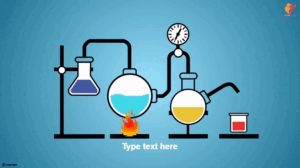Conductors and Insulators

Electricity, a phenomenon intricately woven into the fabric of our modern world, relies on materials that either facilitate or resist the flow of electric current. Conductors and insulators play pivotal roles in this dynamic, influencing the efficiency and safety of electrical systems. This exploration delves into the properties, distinctions, and real-world applications of conductors and insulators.
Conductors:
Conductors are materials that allow the easy flow of electric current. In conductive materials, electrons are relatively free to move, responding readily to an applied electric field. Metals, due to their atomic structure and the presence of a “sea of electrons,” are excellent conductors.
Properties: The key characteristic of conductors is their low electrical resistance. Resistance is the opposition to the flow of electric current, and conductors offer minimal hindrance to the movement of electrons. Common conductors include copper, aluminum, silver, and gold.
Applications: Conductors find ubiquitous applications in electrical wiring, where the low resistance ensures efficient transmission of electricity. Power lines, household wiring, and the internal wiring of electronic devices rely on conductors to carry electric current without significant loss.
Insulators:
Insulators, in contrast to conductors, are materials that impede the flow of electric current. In insulating materials, electrons are tightly bound to atoms, and the movement of charge is limited. Nonmetals and certain compounds exhibit insulating properties.
Properties: Insulators exhibit high electrical resistance, preventing the easy flow of electrons. The insulation properties of materials are crucial for ensuring safety in electrical systems by minimizing the risk of electric shock and preventing unintentional current leakage.
Applications: Insulators are extensively used in electrical systems to isolate conductive components and prevent unintended contact. Common insulating materials include rubber, plastic, glass, and ceramics. Insulators are integral in the construction of power lines, insulating coatings for wires, and the casing of electrical appliances.
Semiconductors:
Intermediate Properties: Semiconductors represent a middle ground between conductors and insulators. These materials can conduct electricity under certain conditions but behave as insulators under different circumstances. Silicon and germanium are common semiconductor materials.
Semiconductor Devices: Semiconductors form the basis of electronic devices such as diodes and transistors. The controlled manipulation of semiconductor properties allows for the creation of electronic components that can amplify signals, switch currents, and perform various functions in electronic circuits.
Factors Influencing Conductivity:
Temperature: Temperature has a significant impact on the conductivity of materials. In general, the conductivity of conductors decreases with increasing temperature, while the conductivity of semiconductors may increase.
Impurities: The presence of impurities can influence the conductivity of materials. Doping, the intentional addition of impurities to semiconductors, is a common practice in the electronics industry to control conductivity and create electronic components.
Real-world Applications and Examples:
Electrical Transmission: Conductors, with their low resistance, are crucial for the efficient transmission of electrical power over long distances. High-voltage transmission lines use conductors like aluminum or copper to minimize energy loss during transport.
Electrical Safety: Insulators play a vital role in electrical safety. The insulation surrounding wires and cables prevents unintended contact and minimizes the risk of electric shock. Safety measures in electrical appliances often involve insulating materials to protect users from electrical hazards.
Challenges and Considerations:
Material Selection: The choice of conductors, insulators, or semiconductors depends on the specific requirements of an electrical system. Engineers must carefully consider the properties of materials to optimize the performance and safety of electrical devices.
Environmental Factors: External factors, such as humidity and environmental conditions, can impact the conductivity of materials. For example, moisture may reduce the insulation properties of certain insulating materials.
Technological Advancements:
Superconductors: Superconductors are materials that, at extremely low temperatures, exhibit zero electrical resistance. While superconductors have been employed in specific applications, achieving and maintaining the required low temperatures presents challenges for widespread use.
Nanotechnology: Advances in nanotechnology have enabled the development of nanomaterials with unique electrical properties. These materials may have applications in the creation of more efficient conductors, insulators, and semiconductor devices.
The distinctions between conductors and insulators form the foundation of electrical systems, dictating how electric current flows and how it is controlled for practical applications.
The careful selection and understanding of materials based on their conductivity properties are essential for the design, efficiency, and safety of electrical devices. As technology continues to advance, so does our ability to manipulate and engineer materials for enhanced



